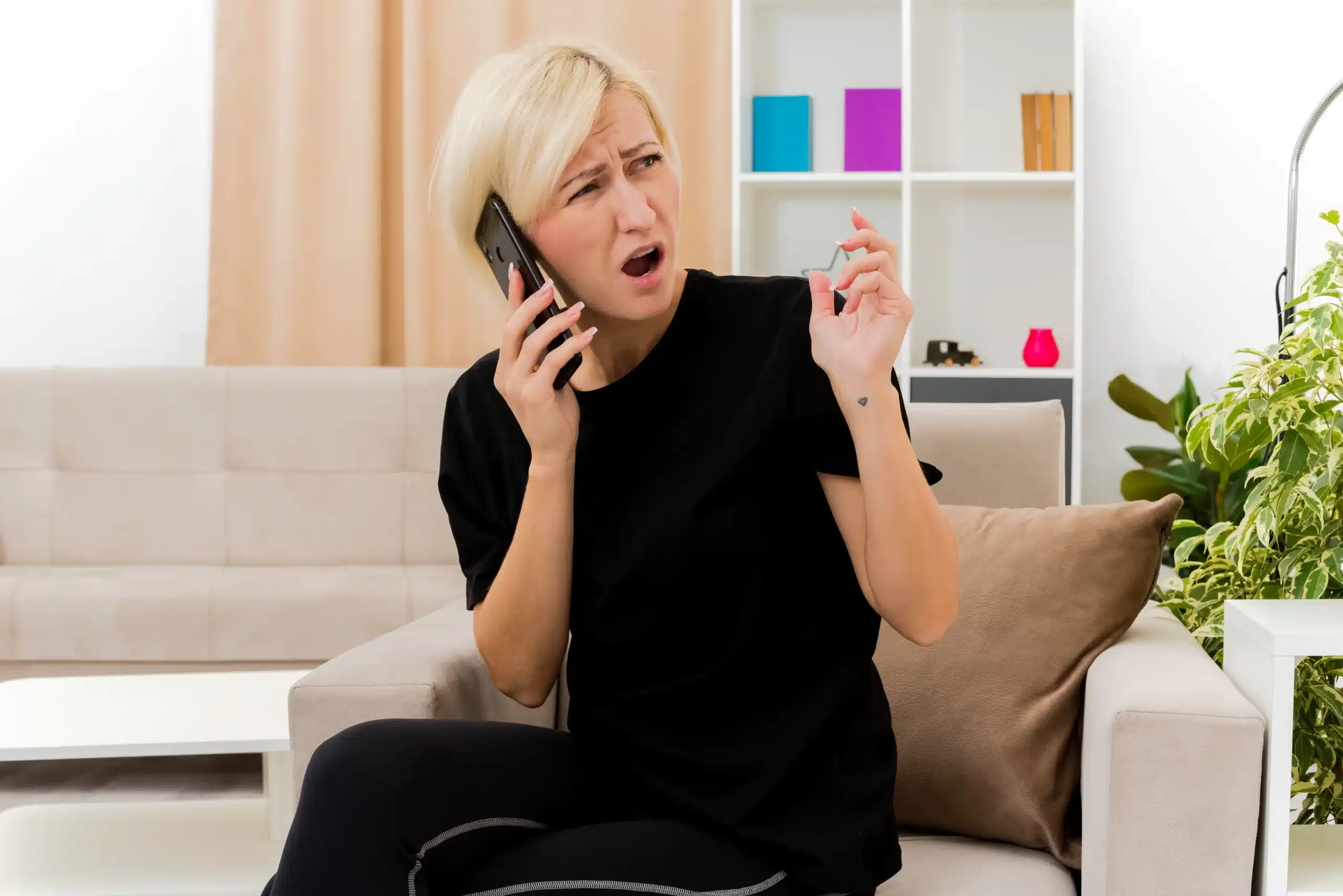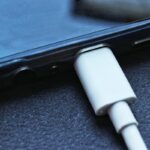
Nothing ruins your day quite like grabbing your phone to watch a video or take a call, only to be unable to hear the sound. It can be hard to identify why your phone’s sound is not working when it was perfectly fine yesterday. Many people panic when this happens, but fortunately, most sound issues have straightforward solutions that don’t require expensive repairs or technical expertise. This guide outlines the most common audio problems for both iPhone and Android phones and shows you exactly how to fix your phone’s sound problems step by step.
Common Sound Issues on iPhones & Android Phones
Before you fix your phone’s sound, it’s important to identify what’s causing audio troubles. Sound issues can stem from simple setting mistakes or complex hardware failures requiring professional attention.
Here are the most frequent sound-related problems that affect mobile devices:
Software-Related Issues
Software problems happen when your phone’s operating system or apps experience conflicts that disrupt normal audio function. These issues typically occur after system updates, when apps conflict with each other, or when settings become corrupt. Unlike hardware issues, software-related problems rarely require expensive repairs and can often be addressed at home. The best thing is that software glitches are usually temporary and don’t indicate permanent damage to your phone.
So, let’s look at the specific software problems that could be impacting your phone’s sound:
1. Silent mode or do not disturb enabled
Many people accidentally enable silent mode or Do Not Disturb modes, which block some alert sounds from playing on their phone’s speakers. These features aim to silence calls, alerts, and media to avoid interrupting meetings or sleep. However, certain sounds like emergency alerts and alarm clocks may still ring even when these modes are activated. When your phone’s audio isn’t working, check whether the physical silent switch is on or if Do Not Disturb mode is activated from your settings app.
2. Sound settings misconfigured
Smartphones have distinct audio controls for different types of sounds like ringtones, music, message notifications, and voice calls. Incorrect adjustments to these settings can result in partial audio loss, where some sounds work and others fail to play. Special audio features like sound enhancement options or automatic volume leveling become problematic if not properly set. Additionally, some phones use different volume levels for wireless earphones, which can confuse users when they switch between internal speakers and external devices.
3. Bluetooth connected to another device
Your phone might send audio to wireless accessories you’re not currently using, such as forgotten earbuds or your vehicle’s sound system. Phones maintain connections with trusted wireless devices and automatically connect when these accessories come within range.
4. App-specific sound issues
Sometimes, audio issues only affect specific apps while others work normally, which indicates that individual apps have their own volume settings or audio conflicts. Popular apps like games, music players, and video streaming applications tend to take over your phone’s system volume controls with their own internal settings. Multiple background apps can also compete to control your phone’s sound system, causing sound glitches or no proper audio playback.
5. Software bugs or glitches
Phone software can have temporary problems that can impact how sound operates on your phone. These bugs usually appear after system upgrades when new programs don’t blend well with old software or apps on your Android or iPhone. Apps may also develop glitches that disrupt regular sound processes.
Hardware-Related Issues
Hardware problems involve physical damage or wear and tear to your phone’s sound components, such as speakers, microphones, and charging jacks. These issues typically develop over time with regular use or occur suddenly through accidents, such as drops or exposure to water.
The main hardware issues that can cause problems with your phone’s sound quality include the following:
1. Speaker blockage or damage
Phone speakers can become blocked by dust, lint, or debris accumulating over time, causing distorted sound or complete audio blockage. Physical damage from drops or impacts can crack the delicate speakers or cut internal wires, resulting in no sound or distorted sound.
2. Water or physical damage
Liquid damage is especially risky to your phone’s entire audio system because water can seep into multiple components simultaneously and cause widespread corrosion. Physical damage can harm internal sound circuits, loosen wire connections, or wear down the protective casing around sensitive components. Even minimal water exposure from rain, spills, or high humidity can leave a residue that causes sound quality to degrade long after your phone appears to be completely dry.
3. Headphone jack or charging port malfunctions
Audio connection ports accumulate debris and dirt that may clog proper contact between your phone and other devices, like headphones. The internal components of these ports also wear out from repeated plugging and unplugging, resulting in loose connections that cause intermittent audio or poor sound quality. Bent or broken connector pins in the ports prevent headphones or charging cables from establishing a secure electrical connection. Some phones utilize the charging port for audio output, and damage to this port can impact both sound and charging.
How to Fix the Sound on Your iPhone or Android
Phone audio problems affect everyone, but most issues can be resolved without professional help. Here’s how to fix the sound on your phone with practical solutions that restore normal audio functionality.
1. Basic Troubleshooting Steps
Begin with these simple repairs that fix most sound problems in your phone. Work through them one by one until your sound comes back.
- Restart your device: Power cycling your phone resolves temporary software problems that block audio output. Android users should press and hold the power button until they receive a restart option and tap it to reboot. iPhone users should press and hold the power button, slide to power off, wait a few seconds, and then turn the device back on.
- Check your volume settings: Always double-check whether your sound settings are turned up to the right level. Go to Settings > Sound on Android phones and confirm all sound categories are properly configured. iPhone users should open Settings > Sound & Haptics and test the ringer slider by adjusting it while listening for sound. Verify any volume restrictions or equalizer settings that could be limiting audio performance. Press the physical volume buttons to ensure they respond correctly and aren’t stuck in a muted position. Make sure your phone is not in Do Not Disturb mode.
- Check Bluetooth connections: Open Settings > Bluetooth on your iPhone and toggle it completely off to disconnect all devices. For Android phones, go to Settings > Connected Devices and disable Bluetooth functionality entirely. Your device may be auto-connecting to headphones, speakers, or car audio systems that were previously paired.
2. Software Fixes
When these easy fixes don’t work, the problem might be deeper in your phone’s software. These steps fix phone speaker sound issues that hide in your phone’s system.
- Update OS: System updates usually contain fixes for audio bugs and compatibility problems. Make sure Wifi is connected during download and installation for optimal results. You can restart your device after it has been updated to activate all new changes and improvements.
- Clear app cache or data: Applications accumulate temporary files that sometimes conflict with system audio functions. Open Settings > Apps on Android devices, select applications that handle media content, then choose Storage & Cache > Clear Cache. iPhone users can offload data from Settings > Safari > Clear History and Website Data. This removes corrupted temporary files but retains your personal selections and downloaded content. Prioritize apps you frequently use for audio playback or communication.
- Boot in safe mode to check faulty apps: Safe mode helps isolate whether third-party programs are the reason for your sound problems. Press the power button on Android devices, then long-press Power Off until Safe Mode becomes a selectable option. Test the audio function while running in safe mode to determine if recently downloaded applications are interfering with normal operation. iPhone users must search for Settings > Privacy & Security > Analytics & Improvements to check for crash reports about audio issues. Remove recently installed applications one at a time until the phone speaker sound function is normal.
3. Hardware Fixes
If software solutions aren’t effective, there could be something wrong with your phone’s speakers or other hardware. Here’s how to fix a phone speaker that is glitching:
- Clean the speaker and microphone: To clean debris buildup, use a soft, dry cloth or brush to gently brush off dust from speaker grills on both iPhone and Android devices. Brush in outward directions to avoid pushing particles deeper into internal components, where they become harder to extract. Wooden toothpicks are great for removing lint from the charging port and headphone jack without causing damage to sensitive electronics.
- Check for water or physical damage: Check for any sign of water intrusion or visible damage in the charging ports, speaker areas, and button openings. Turn off your device immediately if water damage is suspected, and place it in a dry, well-ventilated area. Inspect speaker grills for dents, cracks, or loose components that indicate impact damage requiring professional repair services.
When to Seek Professional Help
Your phone needs professional repair if you hear ongoing static or strange noises that won’t go away, even after restarting your device. Recurring sound failures, such as audio cutting out during calls or music playback becoming distorted, indicate that internal components have been damaged and require expert diagnosis. Hardware problems become obvious when your phone’s speakers stop working entirely, or physical damage from drops affects how sound travels through the device.
Professional technicians bring valuable expertise because they can identify root causes that regular troubleshooting methods cannot address effectively. Their professional equipment and genuine replacement parts ensure repairs that will last longer than temporary fixes, and their experience allows them to work cost-effectively without causing further damage to delicate internal components. In addition, most repair shops guarantee their work, and you can trust that your investment is covered and the problem will stay fixed for a long time.
Contact Cell Phone Hospital for iPhone & Android Phone’s Sound Issues
Sound problems on your phone can disrupt everything from important calls to your favorite entertainment, but the right professional help makes all the difference. When software troubleshooting and basic cleaning don’t solve speaker issues, water damage, or microphone problems, Cell Phone Hospital provides the specialized repair services your iPhone or Android device needs.
Our skilled technicians handle complex audio repairs using genuine parts, restoring your phone’s sound system to its original flawless working condition. Contact us today to restore your device’s audio quality and enjoy clear, reliable sound once again.
Frequently Asked Questions (FAQs)
The most common reasons are low volume, silent or Do Not Disturb mode, or Bluetooth connections redirecting the sound elsewhere. You might also have a blocked speaker or a software glitch disrupting your phone’s sound system. Checking these basic systems first is very important.
Start by checking your volume settings and making sure silent mode is off. Then, restart your phone and test the sound using multiple apps to see if the problem persists. If these steps don’t work, bring your device to the Cell Phone Hospital for a diagnosis.
Yes, water can damage your phone’s speakers, microphone, and internal audio components. Even small amounts of moisture can cause muffled sounds, crackling, or complete audio loss. Turn off your phone immediately if it gets exposed to water, and take it to a professional for repair to prevent irreversible damage.
Dirt and dust in your speaker openings are usually the main causes of distorted sound. If cleaning your speaker gently with a soft brush doesn’t help, try restarting your iPhone or check if a software update is available for you.





